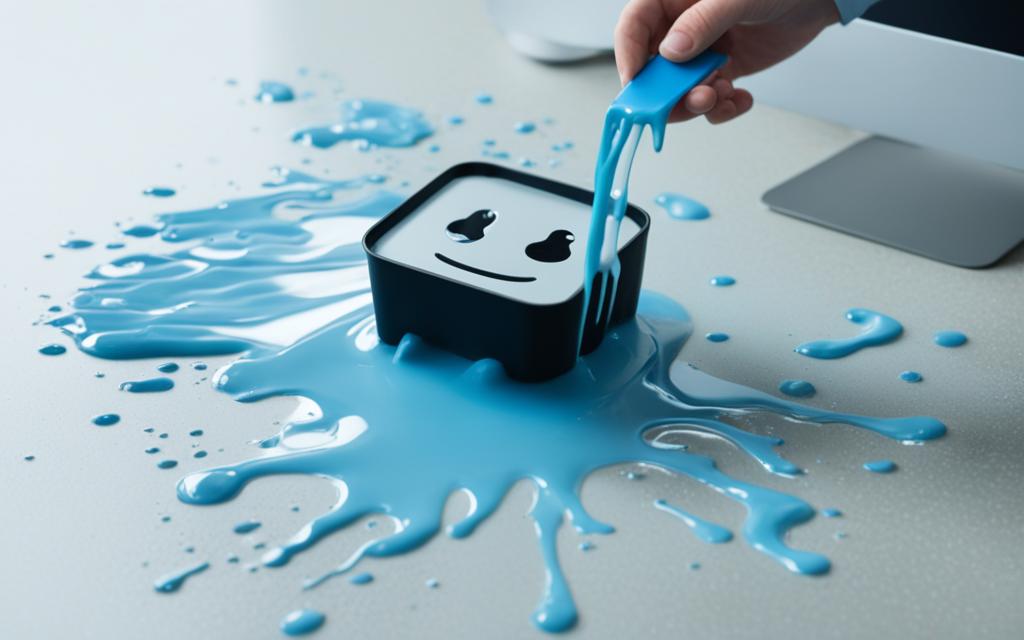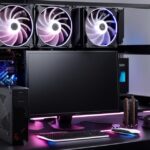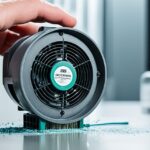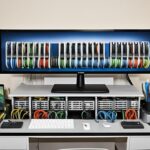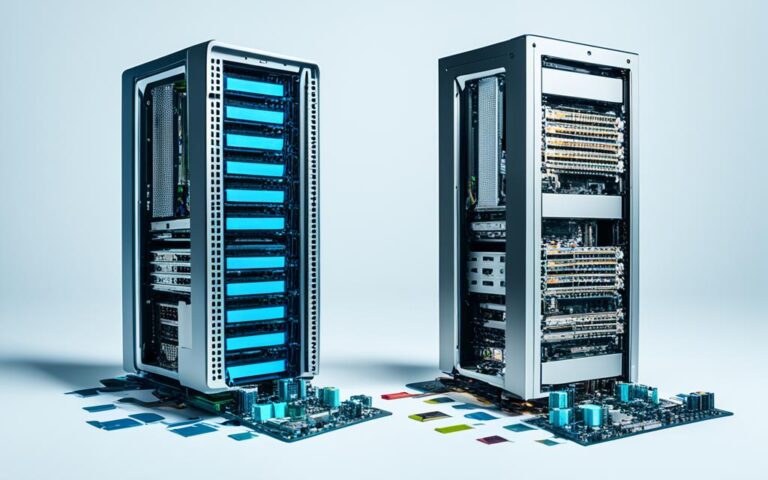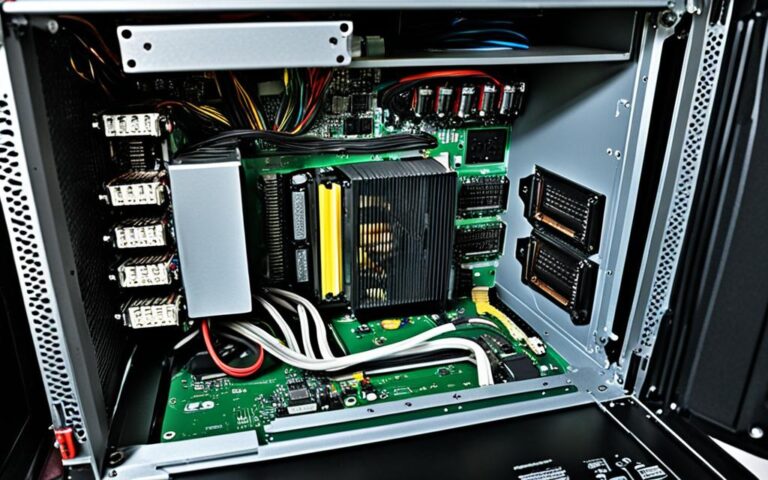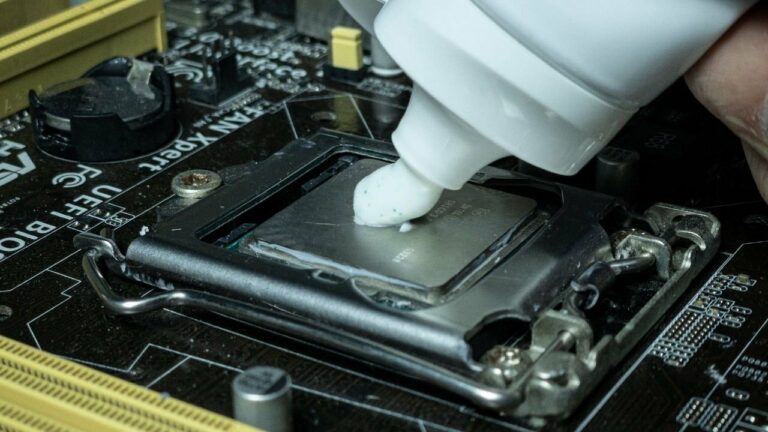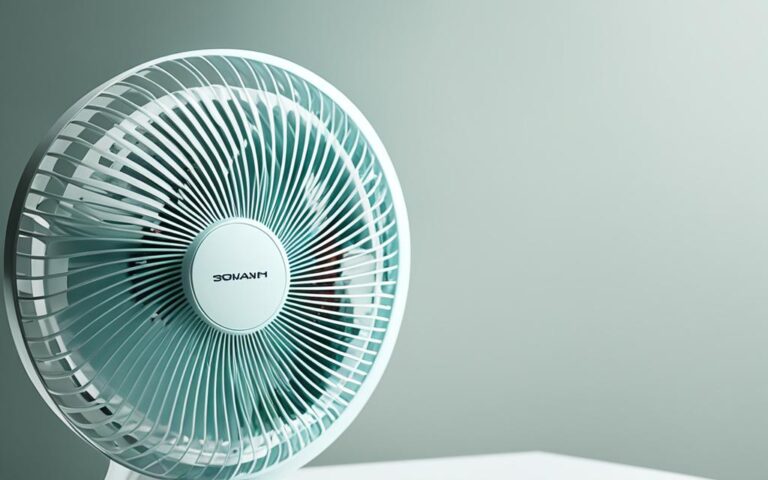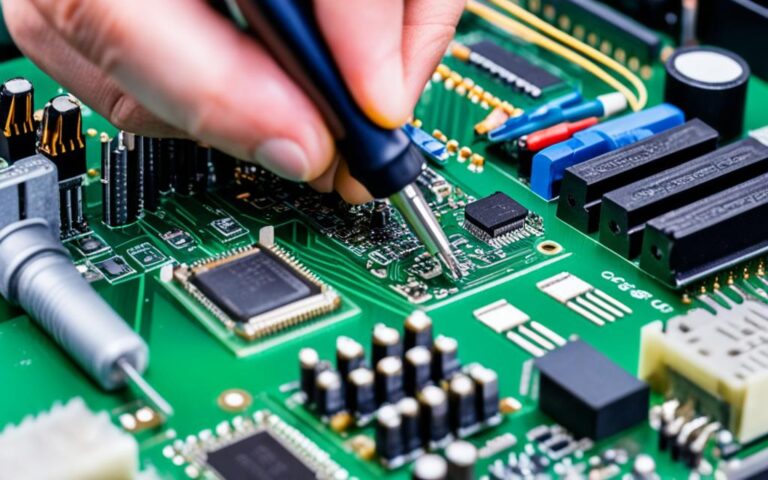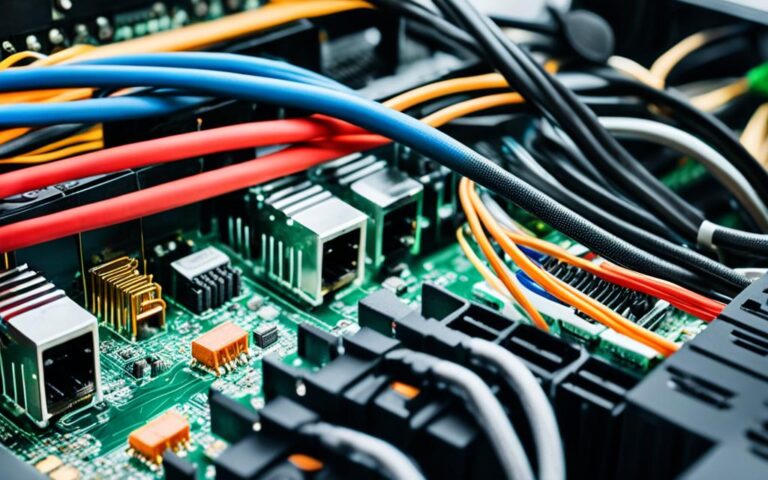Fixing Desktop Computers That Overheat and Shut Down
Welcome to our informative guide on how to fix desktop computers that overheat and shut down. Overheating can cause significant damage to both the software and hardware components of your computer, leading to interrupted performance and potential system failure. In this article, we will explore the common causes of overheating and provide you with effective solutions to ensure uninterrupted performance and a cooler desktop computing experience.
Desktop computers, like any other electronic devices, are susceptible to overheating. Factors such as running too many processes and applications simultaneously, unresponsive applications, having too many browser tabs open, defective fans, blocked air vents, outdated software, viruses or malware, overheated CPU or GPU, and dust buildup on fans and vents can contribute to your computer overheating.
To cool down your computer and prevent it from shutting down, it is crucial to take appropriate measures. You can start by cleaning your computer to remove dust and debris that can obstruct airflow. Improving airflow by placing your desktop computer on a firm, well-ventilated surface or using a cooling pad can also help dissipate heat effectively.
Checking the fans to ensure they are functioning correctly is vital as malfunctioning or blocked fans can lead to overheating. Reapplying thermal paste on your CPU can enhance heat dissipation, and using an external cooling system like a cooling pad can provide additional airflow to your computer.
It is also essential to close resource-intensive programs and use a PC cleaner to optimize performance and reduce the workload on your computer’s components. Regular maintenance and cleaning can go a long way in preventing overheating and ensuring uninterrupted performance.
In the following sections of this article, we will delve deeper into the various solutions to cool down your computer, how computer cooling systems work, preventative measures to avoid overheating, signs of computer overheating, and how to check and maintain your cooling system. We will also provide valuable insights into optimizing your computer’s performance for enhanced efficiency.
Stay tuned to learn how to overcome the challenges posed by overheating, and equip yourself with the knowledge to keep your desktop computer running smoothly and coolly for uninterrupted performance.
How to Cool Down Your Computer
If your computer is overheating, it’s essential to take immediate action to prevent potential damage and ensure optimal performance. Here are some effective methods to cool down your computer:
1. Clean your PC
Dust and dirt accumulation can block the fans and hinder proper airflow, leading to overheating. Regularly clean your computer to remove these obstructions. Use compressed air or a soft-bristle brush to clean the air vents, fans, and other components.
2. Improve airflow
Enhancing the airflow around your computer can significantly contribute to cooling it down. Place your laptop on a hard surface or use a cooling pad for better ventilation. If you have a desktop computer, make sure it is positioned on a firm, well-ventilated surface.
3. Check the fans
Malfunctioning or blocked fans can be a primary cause of overheating. Verify that all fans in your computer are working correctly. Listen for any unusual noises or vibrations, visually ensure fan movement, and inspect the fan grille for dust or debris.
4. Reapply thermal paste
Thermal paste plays a crucial role in transferring heat from the CPU to the heat sink. Over time, the thermal paste can degrade, affecting heat dissipation. Consider reapplying a thin layer of thermal paste to improve heat transfer.
5. Utilize an external cooling system
An external cooling system, such as a cooling pad, can provide an additional boost to airflow and cooling. These devices usually have built-in fans that create extra ventilation, helping to cool down your computer during intense tasks.
6. Close resource-intensive programs
Resource-intensive programs and processes generate more heat, contributing to computer overheating. Close any unnecessary applications or tasks to reduce the load on your CPU and GPU, allowing them to cool down.
7. Use a PC cleaner
Over time, cluttered files and outdated software can impact your computer’s performance and heat generation. Use a reliable PC cleaner to remove unnecessary files, optimize your system, and improve cooling efficiency.
| Method | Description |
|---|---|
| Clean your PC | Remove dust and dirt that can block fans and hinder airflow. |
| Improve airflow | Place your laptop on a hard surface or use a cooling pad. |
| Check the fans | Ensure all fans are working properly and free from obstructions. |
| Reapply thermal paste | Enhance the heat dissipation between the CPU and heat sink. |
| Utilize an external cooling system | Use a cooling pad or other external cooling devices. |
| Close resource-intensive programs | Reduce the load on your CPU and GPU by closing unnecessary applications. |
| Use a PC cleaner | Optimize your system and improve cooling efficiency. |
By following these steps, you can effectively cool down your computer and ensure it runs smoothly without the risk of overheating.
How Computer Cooling Works
Computer cooling is a vital component of maintaining optimal performance and preventing overheating. Understanding how computer cooling works is essential for users to ensure their systems operate efficiently and reliably.
Most computer cooling systems rely on air flow to dissipate heat generated by the internal components. The vents in the computer’s casing allow cool air to enter while releasing hot air, effectively regulating temperature levels.
The primary contributor to air flow in the system is the use of fans. These fans facilitate the movement of air, ensuring a constant flow of cool air and the expulsion of hot air from the computer. The fan speed increases as the temperature inside the computer rises, providing an automatic cooling mechanism.
Internal components such as the heat sink and thermal paste also play essential roles in computer cooling. The heat sink serves as a heat absorber, extracting the generated heat from the CPU or GPU. The thermal paste acts as a conductor, efficiently transferring the absorbed heat away from the CPU, ultimately reducing the temperature.
Furthermore, advanced cooling systems are equipped with cooling software that monitors and regulates the cooling process. This software automatically adjusts fan speeds and cooling levels to match the demands of intensive tasks, ensuring optimal temperature control and preventing overheating.
A well-functioning cooling system maintains the CPU temperature within an acceptable range, preventing excessive heat buildup and potential damage to the computer’s components. By effectively managing and dissipating heat, computer cooling systems optimize performance and extend the lifespan of the hardware.
In conclusion, computer cooling is a critical aspect of maintaining the performance and reliability of desktop computers. By enabling efficient air flow through the use of fans and optimizing heat dissipation with heat sinks and thermal paste, computer cooling systems keep the CPU temperature in check. Coupled with cooling software, these systems ensure a smooth and uninterrupted computing experience, preventing the risks of overheating and associated complications.
Preventing Computer Overheating
To prevent computer overheating, it is important to check both the physical and software components. By taking proactive measures, you can maintain optimal performance and avoid the issues caused by overheating.
Identifying demanding applications:
Identify and close resource-intensive programs that put a heavy load on your CPU. Running too many demanding applications simultaneously can lead to overheating. Consider using them one at a time to reduce the CPU load and prevent overheating.
Closing background apps and deleting temporary files:
Close unnecessary background apps that consume system resources and generate heat. Additionally, delete temporary files regularly to free up valuable space on your computer’s storage and keep it running smoothly.
Optimizing GPU settings:
Adjust the settings of your graphics processing unit (GPU) to optimize performance and reduce heat generation. Some graphics-intensive applications may cause your GPU to work harder, leading to overheating. Configuring specific GPU settings for these applications can help prevent excessive heat buildup.
Mindful physical usage:
Avoid using your computer in direct sunlight, as this can increase the temperature and strain the cooling system. Additionally, placing your computer on a hard, well-ventilated surface can improve airflow and assist in cooling.
Regularly check for updates:
Maintain your computer’s software by regularly checking for updates. Software updates often include patches and improvements that address known issues, including those related to overheating. By keeping your system up to date, you can benefit from the latest enhancements and potentially prevent overheating problems.
Check for malware:
Regularly scan your computer for malware using reliable antivirus software. Malware can slow down your computer, consume system resources, and generate excess heat. By performing regular malware scans, you can ensure that your system remains secure and free from potentially harmful programs.
By implementing these preventative measures and maintaining a proactive approach to computer maintenance, you can prevent overheating and enjoy uninterrupted performance from your desktop computer.
Signs of Computer Overheating
It’s important to be able to recognize the signs of computer overheating to prevent potential damage and ensure optimal performance. Here are some common indications that your computer may be overheating:
- Hot to the touch: If your computer feels unusually hot to the touch, especially in specific areas like the bottom or sides, it could be a sign of overheating. The heat is a result of the internal components generating excessive heat.
- Fan running in overdrive: When your computer’s fan starts running at a high speed consistently, even during normal usage, it might be working hard to cool down the internal components. The increased fan activity is the computer’s attempt to maintain an optimal temperature.
- Loud noises: Unusual and loud noises coming from your computer, such as grinding or buzzing sounds, can indicate that the internal fans are struggling to keep the system cool. These noises are often caused by the fans working harder than usual.
- Slowdowns: If your computer experiences sudden slowdowns, lagging, or freezing, it could be a result of overheating. When the temperature inside the computer rises, it can lead to performance issues as the components struggle to operate efficiently.
- Shutdowns: In extreme cases of overheating, your computer may shut down unexpectedly to prevent further damage. The shutdown happens to protect the internal components from reaching critical temperatures that could cause permanent harm.
“Monitoring the signs of computer overheating is crucial to prevent potential damage and maintain uninterrupted performance.”
To protect your computer from overheating, it is important to monitor the internal temperature and address any signs of overheating promptly. If you notice any of the above symptoms, consider taking steps to cool down your computer and prevent further issues.
| Signs of Computer Overheating | Causes |
|---|---|
| Computer feels hot to the touch | Excessive processes Blocked air vents |
| Fan running in overdrive | Defective fans Dust buildup |
| Loud noises | Malfunctioning fans |
| Slowdowns | Overheated CPU or GPU Too many applications running simultaneously |
| Shutdowns | Protective mechanism against internal damage |
Checking and Maintaining Cooling System
Properly checking and maintaining the cooling system of your computer is essential to prevent overheating and ensure optimal performance. By regularly attending to key components and implementing effective maintenance measures, you can help prolong the lifespan of your computer and avoid potential issues caused by excessive heat.
1. Checking the Fans
One of the first steps in maintaining your cooling system is to regularly check the fans. This can be done by listening for any unusual fan noise when the computer is turned on, feeling for vibrations near the fan grille, and visually confirming fan movement. If you notice any irregularities or malfunctioning fans, it may be necessary to replace them to ensure proper cooling.
2. Improving Airflow
Improving airflow is crucial in preventing overheating. Placing your computer on a flat, hard surface and ensuring unobstructed vents can significantly enhance the efficiency of the cooling system. This allows for better air circulation, enabling effective heat dissipation.
3. Checking Processor and Heatsink Contact
Checking the contact between the processor and the heatsink is another important step in maintaining your cooling system. Ensure that there is proper contact and that the heatsink is securely attached to the processor. Additionally, applying an adequate amount of thermal paste between the processor and heatsink can improve heat transfer and optimize cooling performance.
4. Checking Fan Speed
Monitoring the fan speed is crucial as it indicates the cooling efficiency. Implementing a fan monitoring tool can help you keep track of the fan speed and detect any abnormalities. If the fan speed is consistently low or inconsistent, it may be an indication of a malfunctioning fan that needs to be replaced.
5. Cleaning and Dusting the Computer
Regularly cleaning and dusting the internal components of your computer is vital to maintain proper airflow and prevent overheating. Use compressed air or a soft brush to remove dust and debris from the fans, ducts, and other areas prone to accumulation. This will help improve the overall airflow and cooling efficiency of your computer.
By regularly incorporating these checks and maintenance practices into your computer care routine, you can ensure that your cooling system operates optimally, preventing overheating and maintaining the performance and longevity of your computer.
Optimizing Computer Performance
One of the key factors in preventing computer overheating is optimizing its performance. By improving the efficiency of your computer’s operation, you can reduce the strain on its components, resulting in reduced heat generation and a cooler system overall.
Closing CPU-Intensive Programs
CPU-intensive programs, such as video editing software or resource-heavy games, can put a significant load on your computer, leading to increased heat production. By closing these programs when they are not in use, you can free up system resources and reduce the strain on your CPU, resulting in improved performance and temperature control.
Cleaning Your PC
A clean and clutter-free PC can contribute to better performance and cooling. Over time, files and applications accumulate on your computer, taking up valuable space and potentially slowing down your system. By regularly cleaning your PC, you can remove unnecessary files, bloatware, and temporary data, freeing up resources and optimizing performance.
Updating Software
Outdated software can be a major cause of performance issues and overheating. Software updates often include bug fixes, performance improvements, and security patches. By regularly updating your operating system, drivers, and applications, you can ensure that your computer benefits from the latest optimizations and advancements, resulting in a smoother and more efficient experience.
Checking for Malware
Malware can not only compromise your computer’s security but also negatively impact its performance. Viruses, spyware, and other malicious software can consume system resources and cause your computer to run slow and hot. Regularly scanning your PC for malware and removing any threats can help maintain optimal performance and prevent overheating.
By following these optimization techniques, including closing CPU-intensive programs, cleaning your PC, updating software, and checking for malware, you can improve your computer’s performance while reducing the risk of overheating and ensuring a smoother and more efficient computing experience.
Conclusion
Ensuring that your desktop computer remains cool and preventing overheating is vital for maintaining uninterrupted performance. By implementing preventative measures, optimizing performance, and regularly maintaining the cooling system, you can avoid the issues caused by overheating and ensure your computer functions efficiently.
One of the key preventative measures is to keep your PC clean. Regularly clean the internal components, including fans and vents, to remove dust and debris that can block airflow and cause overheating. Improving airflow by placing the computer on a well-ventilated surface and checking the fans for any malfunctions are also crucial steps.
Optimizing performance can further reduce the risk of overheating. Close CPU-intensive programs when not in use, update software regularly to ensure compatibility and efficiency, and safeguard your system by regularly scanning for malware. Staying up to date with software and security measures is essential.
By taking these preventative measures, optimizing performance, and maintaining your cooling system, you can enhance the longevity of your desktop computer and enjoy uninterrupted performance. Make regular maintenance and monitoring a part of your routine to keep your computer cool and efficient.
